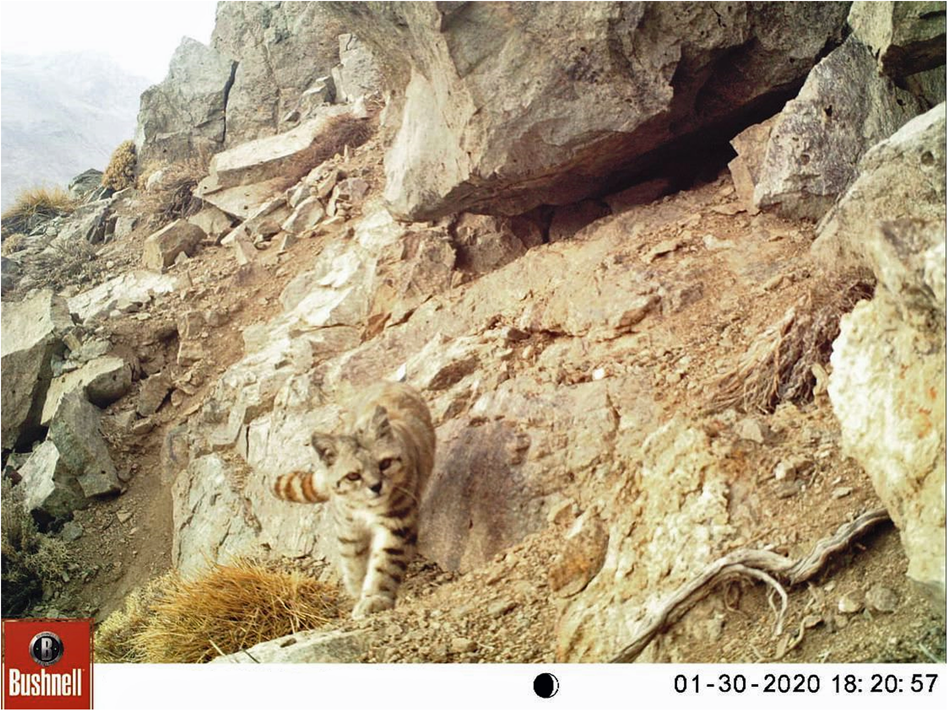The Andean cat Leopardus jacobita is a small felid that inhabits the Andes of Argentina, Peru, Bolivia and Chile, and some areas of northern Patagonia. The species lives at a low population density, with an estimate of no more than 1,400 individuals throughout its range. Habitat loss and degradation are the main threats to this species and it is categorized as Endangered on the IUCN Red List. In Chile, it occurs discontinuously in foothill and high Andean areas from the extreme north (the Arica and Parinacota region) to the central area (the Metropolitan region). Although individuals have been recorded in the Coquimbo and Metropolitan regions, there have previously been no records in the vast connecting landscape of the Valparaíso region.
On 30 January 2020, however, during monitoring using camera traps, we recorded the species for the first time in the Valparaíso region, in the Rocin River basin, Putaendo (32° 28′ S; 70°25′ W, at 2,330 m altitude), on 14 October 2020 a local farmer observed an Andean cat in a walnut orchard in a rural area of Putaendo (32° 31′ S; 70° 38′ W, at 1,115 m altitude), and on 17 October 2020 we recorded the species again with a camera trap in the Rocin River basin (32° 28′ S; 70° 25′ W, at 2,589 m altitude). These first records for the Valparaíso region improve our knowledge of the species’ range, and of potential connectivity between the northern and central zones of Chile. The records in the Rocin River are of particular concern because a large-scale open pit mine is being developed in this area, with damage already caused by the construction of roads and establishment of drilling platforms. Conservation efforts for the Andean cat should focus on long-term monitoring of the species at these sites, further surveys for the species, and increasing the awareness and engagement of communities and private landowners regarding the need to protect the habitat of this species.

The Andean cat photo-trapped in the Valparaíso region on 30 January 2020. Photo: Bernardo Segura Silva.


